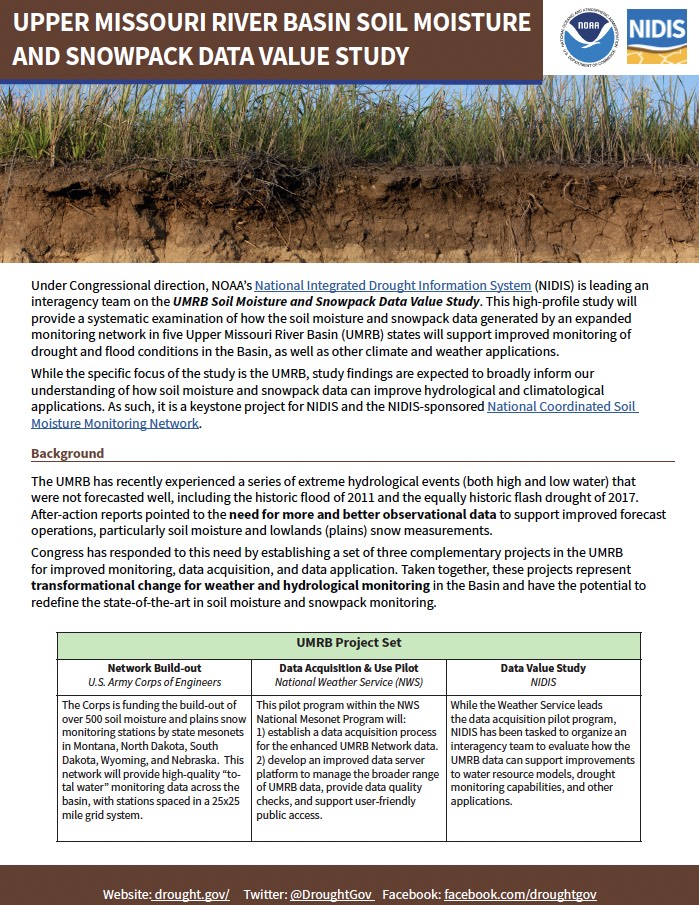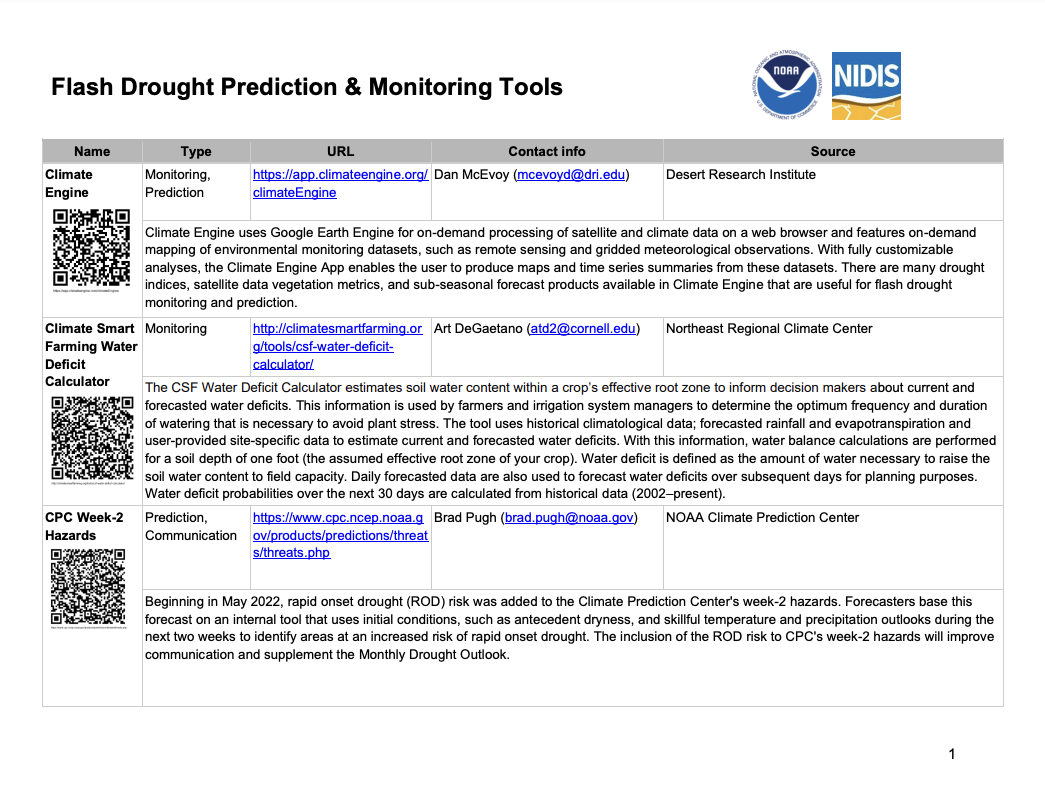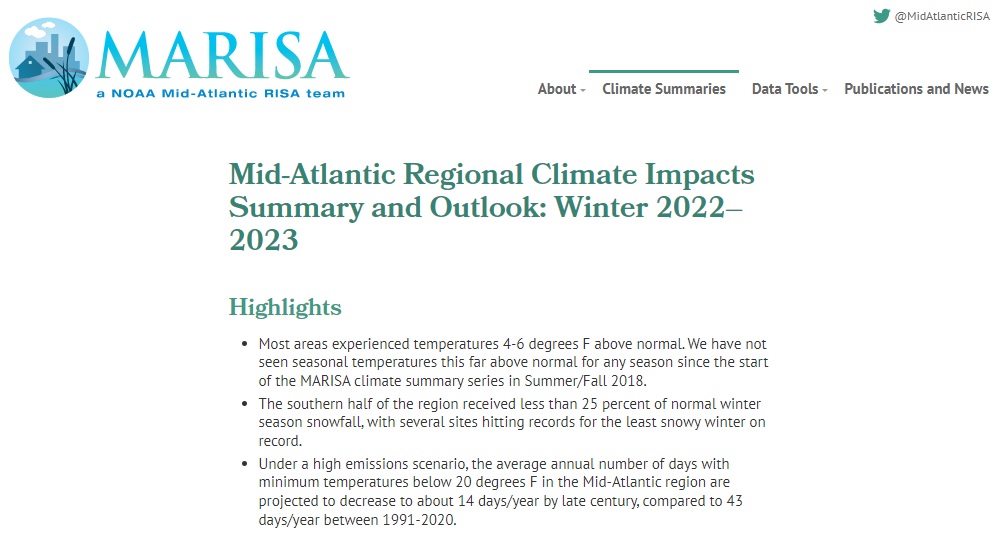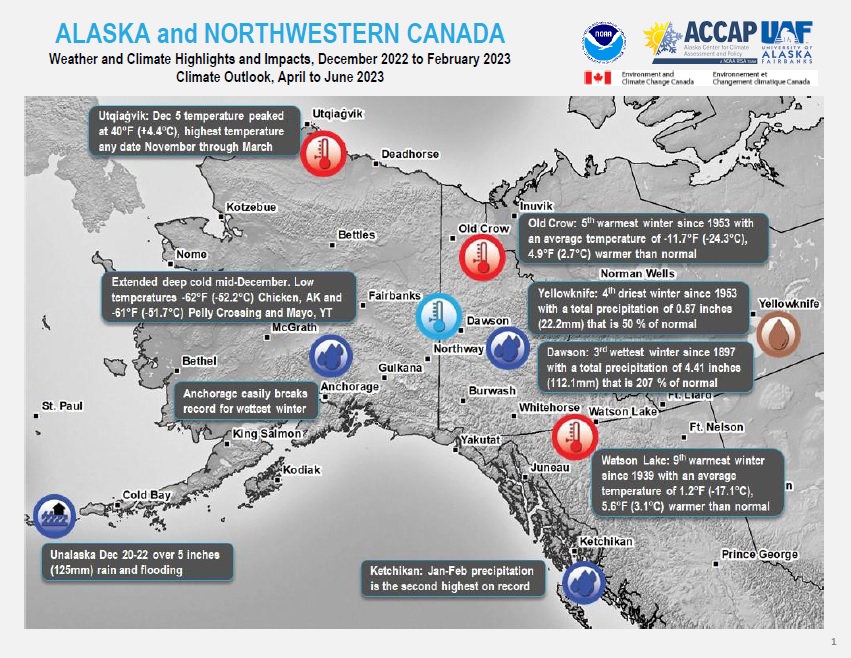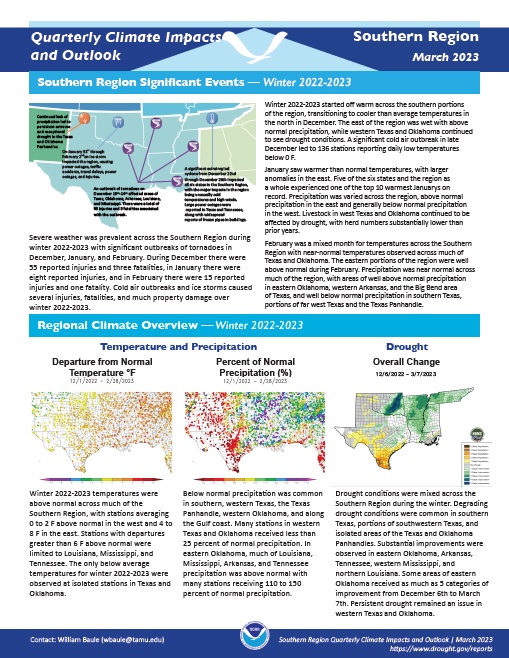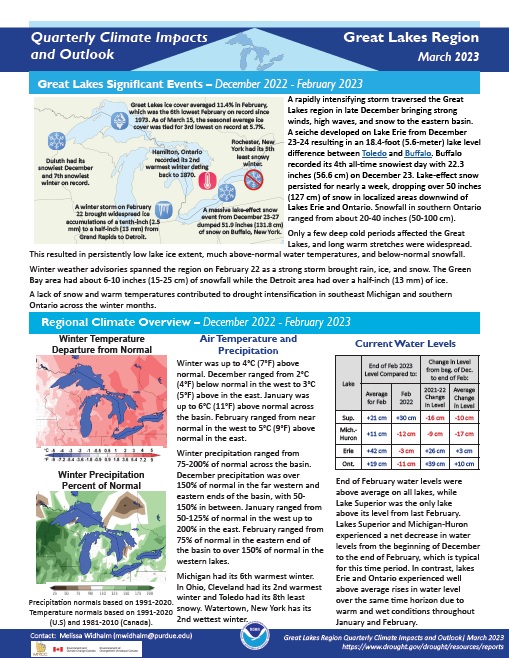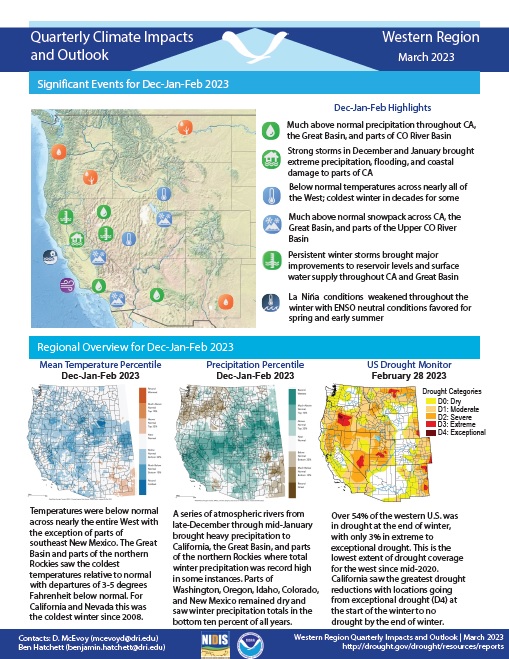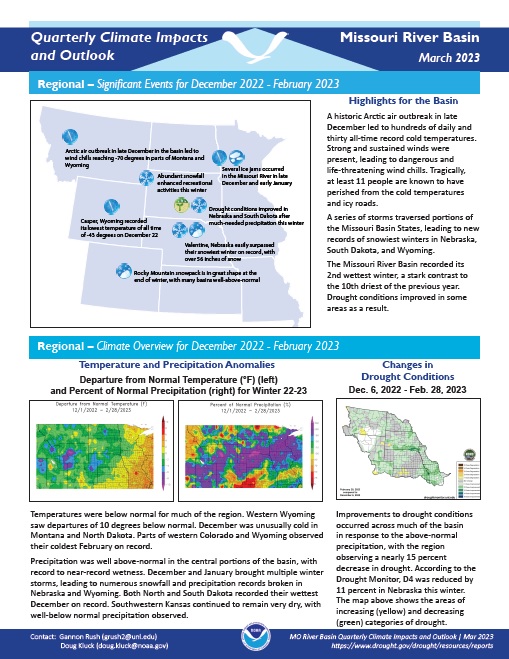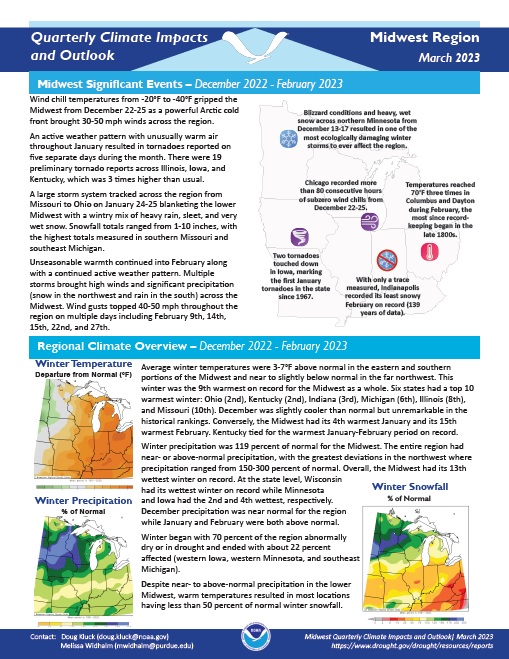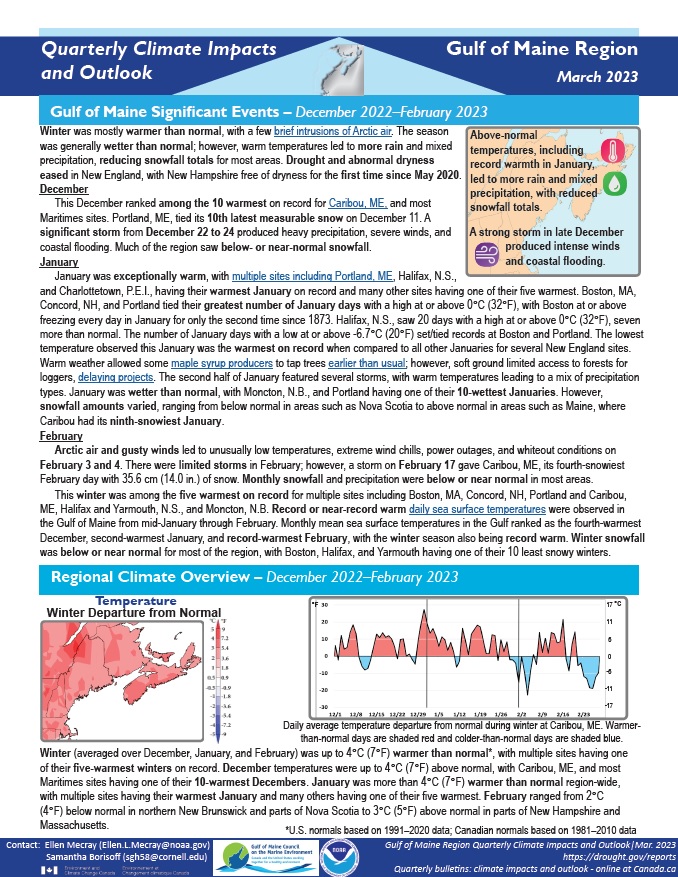For the latest forecasts and critical weather information, visit weather.gov.
Under Congressional direction, NOAA’s National Integrated Drought Information System (NIDIS) is leading an interagency team on the Upper Missouri River Basin (UMRB) Soil Moisture and Snowpack Data Value Study.
The term “flash drought” was coined in the early 2000s to draw attention to the rapid onset or intensification of drought conditions, which can cause large, unexpected environmental and socioeconomic impacts. As a result, flash drought is a target for improved early warning capability.
Quarterly Climate Impacts and Outlook for the Mid-Atlantic Region for December 2022–February 2023. Dated March 2023.
Most areas experienced temperatures 4–6 degrees F above normal. The southern half of the region received less than 25 percent of normal winter season snowfall, with several sites hitting records for the least snowy winter on record.
Quarterly Climate Impacts and Outlook for Alaska and Northwestern Canada for December 2022–February 2023, with an outlook for April–June 2023. Dated March 2023.
NOAA’s Regional Climate Services Program and partners created these climate outlooks to inform the public about recent climate impacts within their respective regions. Each regional report contains easy-to-understand language, and anyone can access them through the Drought Portal.
Quarterly Climate Impacts and Outlook for the Southern Region for December 2022–February 2023. Dated March 2023.
Winter 2022–2023 temperatures were above normal across much of the Southern Region, with stations averaging 0 to 2°F above normal in the west and 4 to 8°F in the east. Below-normal precipitation was common in southern, western Texas, the Texas Panhandle, western Oklahoma, and along the Gulf Coast. In eastern Oklahoma, much of Louisiana, Mississippi, Arkansas, and Tennessee precipitation was above normal.
Quarterly Climate Impacts and Outlook for the Great Lakes Region for December 2022–February 2023. Dated March 2023.
Winter was up to 4°C (7°F) above normal. Winter precipitation ranged from 75%–200% of normal across the basin.
NOAA’s Regional Climate Services Program created these climate outlooks to inform the public about recent climate impacts within their respective regions. Each regional report contains easy-to-understand language, and anyone can access them through the Drought Portal.
Quarterly Climate Impacts and Outlook for the Western Region for December 2022–February 2023. Dated March 2023.
Temperatures were below normal across nearly the entire West with the exception of parts of southeast New Mexico. A series of atmospheric rivers from late December through mid-January brought heavy precipitation to California, the Great Basin, and parts of the northern Rockies where total winter precipitation was record high in some instances.
Quarterly Climate Impacts and Outlook for the Missouri River Basin for December 2022–February 2023. Dated March 2023.
Temperatures were below normal for much of the region. Precipitation was well above normal in the central portions of the basin, with record to near-record wetness. Improvements to drought conditions occurred across much of the basin in response to the above-normal precipitation, with the region observing a nearly 15% decrease in drought.
Quarterly Climate Impacts and Outlook for the Midwest Region for December 2022–February 2023. Dated March 2023.
Quarterly Climate Impacts and Outlook for the Gulf of Maine Region for December 2022–February 2023. Dated March 2023.
Winter (averaged over December, January, and February) was up to 4°C (7°F) warmer than normal, with multiple sites having one of their five-warmest winters on record. Winter precipitation (accumulated from December to February) ranged from near normal to 150% of normal.


